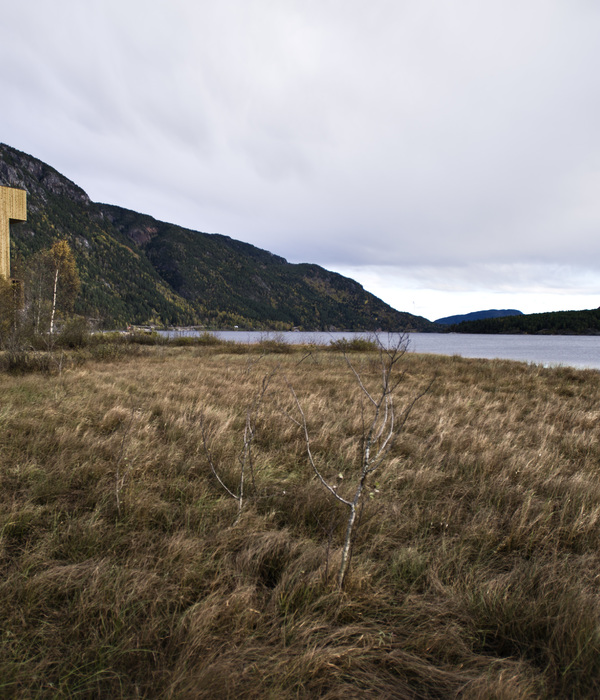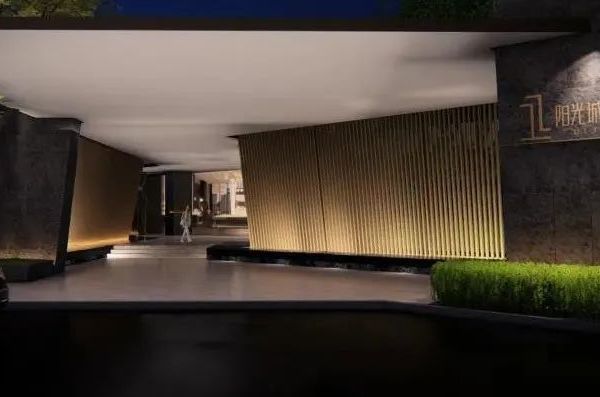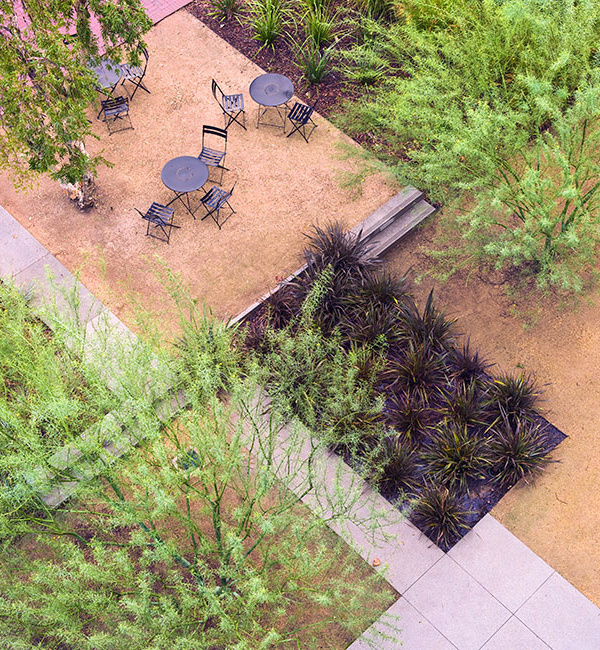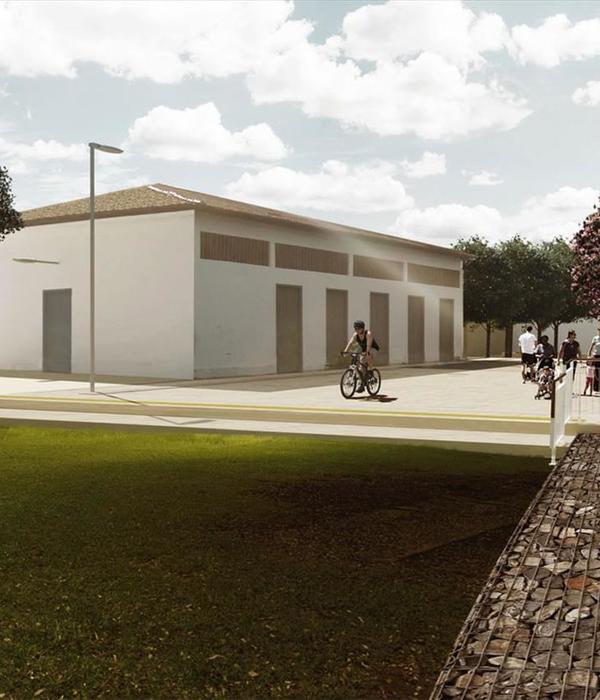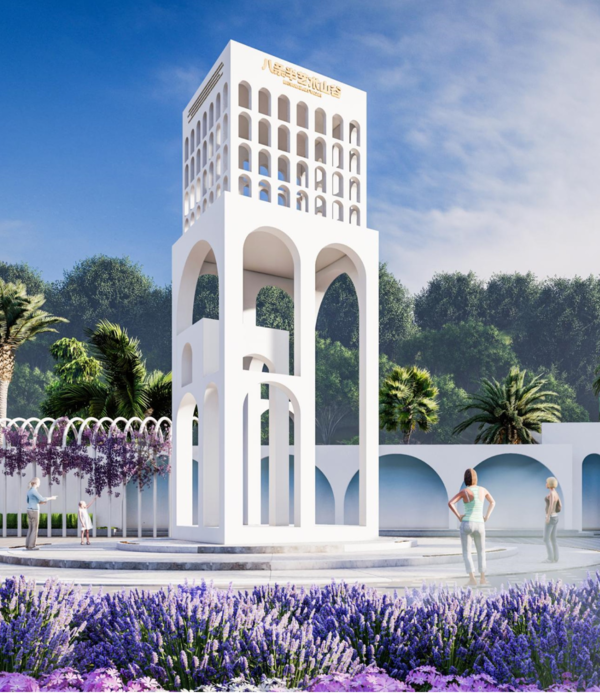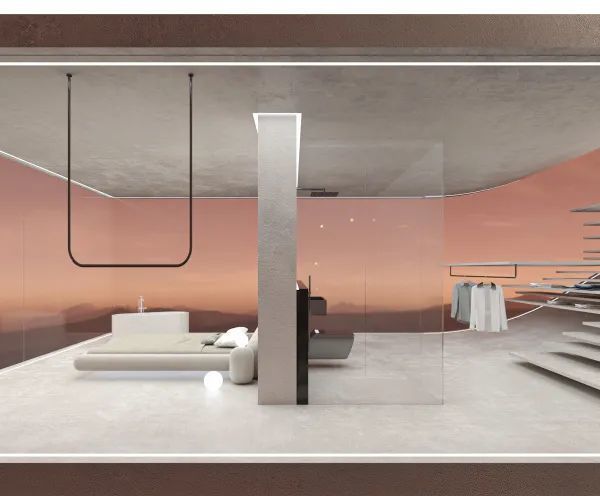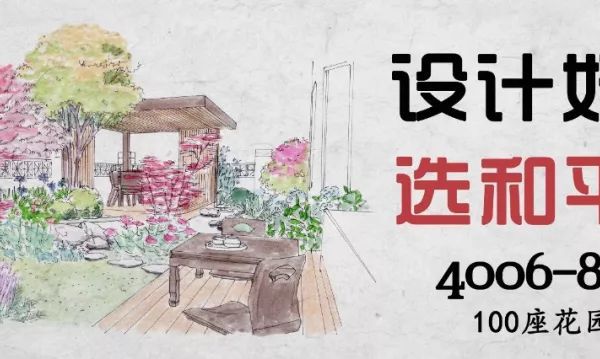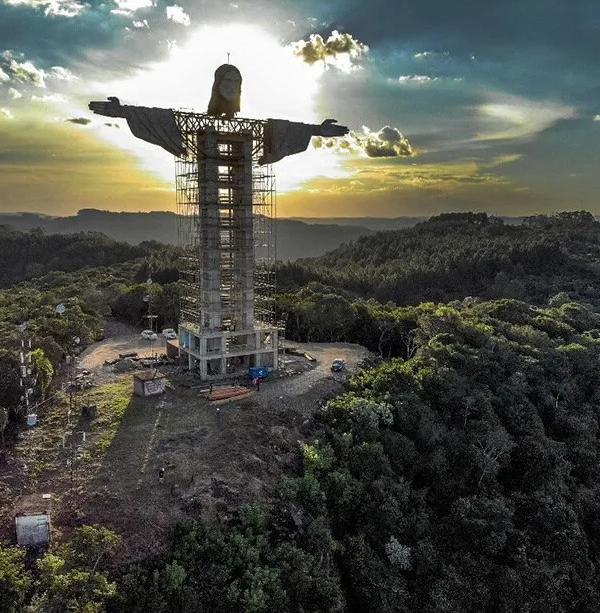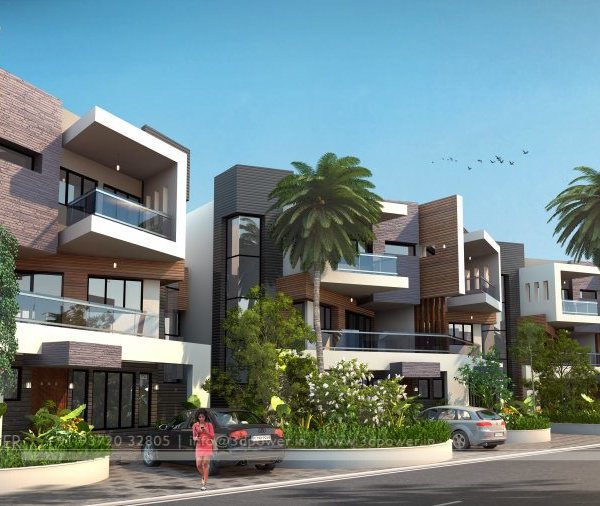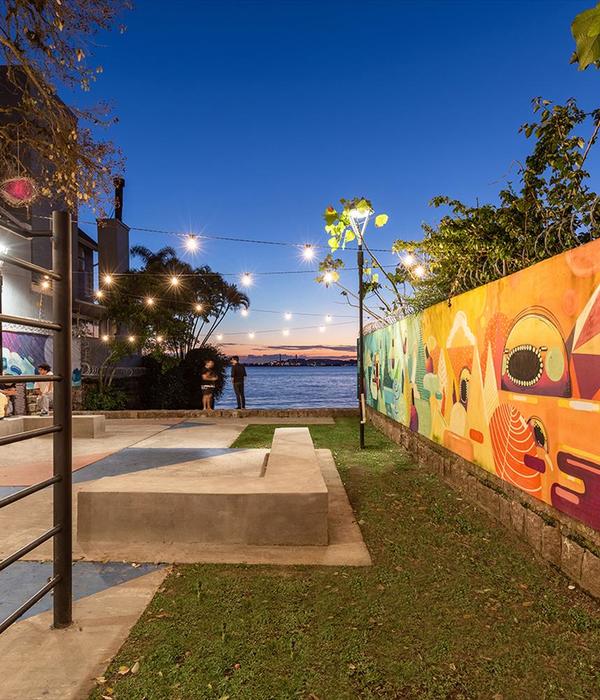来自ASLA
Ecoregional Green Roofs: Theory and Application in the Western USA and Canada | Bruce Dvorak, ASLA
项目陈述
Project Statement
《生态区绿色屋顶:在美国西部和加拿大的理论和应用》是一本新的(2021年)同行评审书籍(Springer出版社,城市与自然系列,619页),它探讨了生态区(ecoregion)如何对绿色屋顶产生作用。本书包含以下几个重点内容:(1)绿色屋顶的植被研究(Blank 2013);(2)炎热干燥气候下的绿色屋顶研究(Williams等,2010);(3)绿色屋顶的新理念报告(Sutton和Lambrinos,2015);(4)关于用于绿色屋顶的本土植物的讨论(Cook-Patton和Bauerle,2012);以及(5)绿色屋顶的全面应用研究。第一部分介绍了绿色屋顶生态区的历史、理论以及研究方法;第二部分包含案例研究结果;第三部分是经验总结和未来展望。通过实地考察、设计师和业主采访以及文献研究,本书的九位作者对北美西部20个生态区的73个绿色屋顶的案例研究进行了深入探索。最终成果包括一个基线数据集,涵盖830个分类群和357个属的植物、生态区绿色屋顶的维护要求以及使用后的观察。
Ecoregional Green Roofs: Theory and Application in the Western USA and Canada is a new (2021) edited and peer-reviewed book (Springer, Cities and Nature series, 619 pages), that explores how ecoregions can be useful for green roofs. It addresses needs for (1) research on vegetation for green roofs (Blank 2013); (2) research on green roofs in hot and dry climates (Williams et al. 2010); (3) reporting of emerging ideas for green roofs (Sutton and Lambrinos 2015); (4) discussions on native plants for green roofs (Cook-Patton and Bauerle 2012); and (5), green roof research on full-scale applications. Part I introduces the history and theory of ecoregions for green roofs, and research methods. Part II covers case study results and Part III covers lessons learned and future outlook. Through on-site visits, interviews with designers and owners, and reviews of literature, nine authors explore 73 green roof case studies in 20 ecoregions in western North America. Results yield a baseline dataset of 830 taxa, and 357 genera of plants, maintenance requirements, and post-occupancy observations for ecoregional green roofs.
▲本书目录以及第三章内容:种植黑土草原植被的绿色屋顶。高草草原植被在德克萨斯州奥斯汀市外的一处半密集型绿色屋顶上茁壮生长。具有恢复力的绿色屋顶在灌溉系统停止运作后休眠了九个月。当灌溉系统修好之后,顶端植物的生长很快便恢复如初(如图)。Table of Contents and a Green Roof with Blackland Prairie Vegetation (Chapter 3).Tallgrass prairie vegetation thrives on this semi-intensive green roof outside of Austin, Texas. This resilient green roof sat dormant for nine months after the irrigation system stopped functioning. Top-growth was revived soon after the irrigation system was repaired (shown here).
项目说明
PROJECT NARRATIVE
环境研究界已经明确呼吁发现能够让城市更具弹性、再生能力和生物多样性,同时满足人类与城市生态系统更广泛的需求的新型绿色基础设施(Tzoulas等,2007;Pereira等,2010;Kowarik,2011;Weber,2013),比如绿色屋顶,能够提供包括雨水衰减、节能、减少城市热岛、碳固存以及野生动物栖息地在内的一系列生态系统服务 (Oberndorfer,2007;Sutton,2015; Williams等,2014)。 在北美,关于绿色屋顶生态系统的研究正在兴起,并着重于提升其可持续性和弹性(Sutton,2015),尤其是在那些日间经历高温、降雨间隔长达数周或数月的生态区(Williams等,2010;Milburn,2014)。通过观察和了解生态区的原生植被如何适应自然环境并茁壮生长,研究人员和设计师将学习如何制定正确的策略,以巧妙地利用绿色屋顶上的原生植被(Butler,2012;Cook-Patten,2012)。此外,还需要在灌溉水源的可持续获取和使用上进行创新。在本书中,九位作者对以上问题进行了研究,并将书中的案例研究方法应用到了对26个保护地、以及73个分布在美国中西部和加拿大的绿色屋顶的研究和探索当中。
第一部分
本书的第一部分介绍了位于100度经线以西的北美本地景观、生态区和绿色屋顶的发展以及研究的目标和方法。
背景和研究陈述
美国原住民对整个北美西部的陆地生态系统的发展和持续产生了至少1万年的影响。丰富、多样、美丽的自然环境吸引了北美景观的第一批管理者,并长期成为他们生活中不可或缺的一部分。然而,从刘易斯和克拉克在1804年首次探索西部开始,到19世纪末期后的西部迁移,新的土地使用者以强势的姿态对这些景观进行了转换、变更或永久开发。例如,曾经大范围分布在各州的高草草原生态系统退化成了一个个孤立的斑块。考虑到以土地为基础的保护措施很难迅速地得到应用,因此可以通过设计绿化屋顶来维持其所在区域的本地植被的多样性——这些地区几乎没有留存下来的原生栖息地(Lundholm,2006)。
今天,分散在北美西部的保护地仍然存在,并成为了新一代设计师打造绿色屋顶的灵感来源。不过,对于西部的数百个绿色屋顶的案例研究仍然十分有限。《生态区绿色屋顶:在美国西部和加拿大的理论和应用》一书正式为了发现和报告更多相关的设计案例,并向读者呈现这些案例的成功与失败,以及设计师从已建项目中吸取到的经验教训。本书的写作目标之一,正是为了填补专业人士、设计师、研究人员、学生和教育工作者在获取与绿色屋顶相关的文献资料上的空白。
方法
案例研究的数据来自于对26个保护地和140多个绿色屋顶项目的实地访问、与生态区域绿色屋顶的所有者、设计者及管理者的交谈,以及网站、报告和同行评审出版物等在线资料。这些案例研究从设计概念、材料、灌溉和维护方法、野生动物、植物种类以及经验心得等几个方面展开探讨。
第二部分
本书的作者考察了26个能够代表草原、沙漠、山地草甸、沿海草甸、灌木和亚高山生态区的保护地,并对73个位于城市地区的绿色屋顶进行了案例研究。
“案例研究”摘录
生态区绿色屋顶属于以下四个类别之一:1)所有植被都来自本地或附近的绿色屋顶;2)植被来自一个或几个相邻生态区的绿色屋顶(例如,来自高山生态系统的植被种植在位于山谷的绿色屋顶上);3)植被来自不同但相似的北美生态区(100度经线以西)的绿色屋顶;4)植被是本地(100度经线以西)和非本地(引进或外来)植物组合的绿色屋顶。
案例研究得出了数百项事实和结论,其中几个重点包括:• 在20个生态区的调查得出了在广泛型、半密集型和密集型的绿色屋顶上种植的830个本地植物分类群(代表了357个属)的相关知识。植物形式包括乔木、灌木、草、野花、鳞茎、球茎、莎草、芦苇、多肉植物和原产于干燥、中度和湿润生境的矮生木本植物。
• 性能最优的绿色屋顶中有一位“冠军”,它对当地的生态系统和绿色屋顶而言具有极丰富的价值,同时具备预测入侵植物的潜在爆发的能力。
最佳的绿色屋顶通常是采用综合型设计的,其中“活屋顶”发挥着基本的建筑功能,例如减少能源消耗、处理废水(灰水)、衰
▲绿色屋顶的生物多样性。左侧图例展示了无脊椎动物进入绿色屋顶的方式。书中附有大量的定制地图,例如右图描绘了帝王蝶在北美中部和西部以及一些主要城市(黑点所示)中的迁移路线。Biodiversity on Green Roofs. (Left) Graphic depicts ways that invertebrates can arrive at green roofs. The book includes many custom maps (right), including this one which depicts migration routes of Monarch butterflies in central and western North America and major cities (black dots).
▲绿色屋顶生态区。左图是本书涉及的生态区概览图。每个案例研究章节都包括一张放大的生态区地图,展示了潜在的自然植被、主要河流、自然地理区域和人口中心。地图改编自1995年的Bailey和Omernik地图。Ecoregions for Green Roofs. Overview map of ecoregions covered in the book (left). Each case study chapter includes enlarged ecoregion maps showing potential natural vegetation, major rivers, physiographic regions, and population centers. Maps are adapted from Bailey (1995), Omernik (1995), and others.
▲生态区特征。各章节涵盖了对生态区的潜在自然植被和文化影响的描述,以及一些具有历史意义的生态区地图(左)。此外还提供受保护的生态区植被所在的位置和照片(右),以及一些历史性的生态区地图(左)。各章包括生态区植被保护的地点和图片(右),例如位于Pipers Lagoon公园(加拿大B.C.省纳奈莫市)的俄勒冈白栎生态系统。Ecoregion Characteristics. Chapters include ecoregion descriptions of potential natural vegetation, cultural influences, and some historic ecoregion maps (left). Chapters include locations and images (right) of conserved ecoregion vegetation such as this Garry oak ecosystem located at Pipers Lagoon Park (Nanaimo, B.C. Canada).
▲以俄勒冈白栎生态系统为灵感设计的绿色屋顶(第10章)。在加拿大不列颠哥伦比亚省纳奈莫市的广泛型绿色屋顶上,原生于俄勒冈白栎生态系统的草、野花和景天属植物正茁壮生长。这张照片于8月下旬拍摄的,接近夏季旱季的尾声,一些植被已经进入休眠期。
Green Roof Inspired by a Garry Oak Ecosystem (Chapter 10). Grasses, wildflowers, and sedums native to Garry oak ecosystems thrive on this extensive green roof in Nanaimo, British Columbia, Canada. This photo was taken during late August, near the end of the summer dry season, when some vegetation becomes dormant.
案例研究中的植被、气候数据和章节摘要。每个案例研究包括生长在绿色屋顶上的本地植物清单(左)、气候数据和图表(中),以及突出显示常见于绿色屋顶的植被的章节总结(右)。
Examples of Case Study Vegetation, Climate Data, and Chapter Highlights. Each case study includes plant lists of native vegetation growing on the green roof (left), climate data and graphs (center), and chapter summaries highlighting popular vegetation on green roof (right).
▲西南部沙漠地区新墨西哥州案例研究(第5章)。新墨西哥州上诉法院的半密集型绿色屋顶是经LEED黄金级别认证的建筑项目的一部分。该书的研究结果显示,西南部沙漠的屋顶绿化基质通常较深,这有利于深根性的沙漠植被生长,并且可以防止过热。New Mexico Case Study in the Desert Southwest (Chapter 5). The New Mexico Court of Appeals semi-intensive green roof is part of a LEED-certified gold project. Our findings revealed that green roof substrates in the Desert Southwest are typically deeper to support deep-rooted desert vegetation and prevent heat stress.
▲Anza-Borrego沙漠的生态区绿色屋顶(第5章)。建造于1979年、位于加州Borrego Springs的Anza-Borrego游客中心拥有西南部沙漠地区最古老的绿色屋顶之一。从该图的中右部可以看见屋顶上的通风口,防水层也依然保留在原处。Ecoregional Green Roof in the Anza-Borrego Desert (Chapter 5). Constructed in 1979, the living roof on top of the Anza-Borrego Visitor Center in Borrego Springs, California is one of the oldest green roofs in the Desert Southwest. A roof vent is visible center right, and the original waterproofing remains.
▲绿色屋顶的亚高山栖息地(第1章,生态区绿色屋顶介绍)。高山和亚高山栖息地,例如图中所示的这块位于落基山国家公园的栖息地,包含了生长在浅层、营养不足但排水良好的土壤中的垫状植物。这些植物群落中的成员是绿色屋顶的良好“候选者”。
Sub-alpine Habitat for Green Roofs (Chapter 1 Introduction to Ecoregional Green Roofs). Alpine and sub-alpine habitats such as this one at Rocky Mountain National Park include cushion plants, which grow in shallow and nutrient-deficient, and well-drained soils. Members of these plant communities make good candidates for green roofs.
▲落基山Front Range地区的绿色屋顶(第4章)。图中展示的是丹佛植物园Mordecai儿童花园和怀俄明大学贝瑞生物多样性保护中心的绿色屋顶。它们各自持有170个和110个本地分类群,其中包括一些来自亚高山和高山栖息地的物种。Green Roofs along the Front Range of the Rocky Mountains (Chapter 4). Green roofs at the Mordecai Children’s Garden at the Denver Botanic Garden and the Berry Biodiversity Conservation Center, at the University of Wyoming. These feature 170 and 110 (respectively) native taxa including species from sub-alpine and some alpine habitats.
▲研究历史画作和俄勒冈州波特兰的生态屋顶(第9章):该章节涵盖了本地生境的历史画作(如小图所示)。这幅由Albert Bierstadt于1863年创作的绘画描绘了俄勒冈州波特兰附近的大草原和橡树稀树草原生态系统。背景图中,马尔特诺马县的建筑上种植着本地草和野花,作为其生态屋顶示范项目的一部分。Learning from Historic Paintings and an Ecoroof in Portland, Oregon (Chapter 9)。Chapters include historic paintings of native habitats (inset). This 1863 painting by Albert Bierstadt depicts prairie and oak savanna ecosystem near Portland, Oregon. (background) The Multnomah County building includes native grasses and wildflowers as part of its ecoroof demonstration project.
▲山间半干旱草原生态区的10个绿色屋顶研究案例之一(第6章)。这是一个利用多种植物形式的全本地半密集型屋顶花园。该花园充分利用了俄勒冈州东部以及山间半干旱草原生态区部分地区的原生半干旱灌丛植被。
One of 10 Green Roofs Studied in the Intermontane Semi-arid Grassland Ecoregions (Chapter 6). Example of an all-native semi-intensive roof garden that makes use of many forms of plants. This roof garden makes use of semi-arid scrub vegetation native to eastern Oregon, and across parts of the Intermontane semi-arid grassland ecoregions.
绿色屋顶和亲生物设计:该章节强调了案例研究中常见的屋顶绿化功能(图右)。位于Sutter医院的无障碍半密集型屋顶花园是五个全本地植物绿色屋顶之一,可以从医院的访客区(如图)、康复室和其他有利位置直接望见。
Chapter summaries highlight green roof functions common to the case studies (right). This accessible semi-intensive roof garden at Sutter Hospital is one of five all native green roofs visible from visitor areas (shown here), recovery rooms, and other strategic locations.
▲用绿色屋顶教导下一代:书中的几个案例研究花园包含了光伏板装置,图中的花园的光伏板安装在屋顶草甸上。索诺玛学院的建筑设计旨在鼓励教导学生参与周围环境,成为批判性的思考者,同时观察并收集数据。
Living Roofs for Teaching the Next Generation. Several case studies include photovoltaic panels, this one is on a rooftop meadow. Buildings at Sonoma Academy are designed to teach students to engage their environments, to be critical thinkers, and to observe and collect data, including this green roof.
▲研究总结、综述和景观生态学。左图描述了多栋带有绿色屋顶的建筑如何形成屋顶斑块、区域和绿廊。右图展示了位于加拿大温哥华市的一项能够体现该理念的建筑实例。如图右上角所示,其中一些绿色屋顶设定了栖息地的目标。Research Summary, Synthesis, and Landscape Ecology. (Left) Diagrams depicting how multiple buildings with green roofs can form rooftop patches, districts, and corridors. (right) Built examples of this concept exist in Vancouver, B.C. Canada. Some of these green roofs have habitat goals (upper right).
PROJECT NARRATIVE
There is a clear call in the environmental research community for the discovery of novel forms of green infrastructure that can make cities more resilient, regenerative, biologically diverse, and responsive to the broader needs of humans and urban ecosystems (Tzoulas et al. 2007; Pereira et al. 2010; Kowarik 2011; Weber 2013). Green roofs, for example, provide ecosystem services including stormwater attenuation, energy conservation, reduction of urban heat islands, carbon sequestration, wildlife habitat, and more (Oberndorfer 2007, Sutton 2015; Williams et al. 2014). In North America, research on green roof ecosystems is just emerging on how they can become more sustainable and resilient (Sutton 2015), especially in ecoregions that experience high daytime temperatures and many weeks or months between precipitation events (Williams et al. 2010, Milburn 2014). By observing and learning how vegetation native to ecoregions adapts and thrives in its natural settings, researchers and designers can learn how to make decisions about the resourceful use of native vegetation on green roofs (Butler 2012, Cook-Patten 2012). Also, innovations in the sustainable sourcing and use of water for irrigating green roofs are needed (Lambrinos 2015). Nine authors investigate these issues and more in Ecoregional Green Roofs: Theory and Application in the Western USA and Canada a new (2021) peer-reviewed three-part book published by Springer in their Cities and Nature series (619 pages). A case study method is used in the exploration of 26 conservation site case studies, and 73 green roof case studies that are built and maintained in the central and western United States and Canada.
Part I
This section introduces native landscapes of North America west of the 100th meridian, the development of ecoregions and green roofs, and research goals and methods.
Background and Research Statement
Native Americans have influenced the development and persistence of terrestrial ecosystems across the western landscapes of North America for at least the previous 10,000 years. The abundantly rich, diverse, and beautiful natural environments were integral and ever-present in the lives of the first stewards of North American landscapes. However, between the time of the first exploration of the West by Lewis and Clark beginning in 1804 and the settlement of the West from the late 1800s onward, those same living landscapes were persuasively altered, modified, and/or permanently developed by new tenants of the land. Tallgrass prairie ecosystems, for example, were reduced to isolated patches that represent about one-tenth of one percent of the land in some states where they were once abundant. As land-based conservation practices are slow to be adopted, vegetated rooftops can be designed to be biologically diverse and sustain vegetation that is native to areas where no little or no native habitat remains (Lundholm 2006).
Today, scatterings of conservation sites remain across the West and serve as a source of inspiration for a new generation of green roof designers. However, there is only limited research on the hundreds of green roofs in the West. Ecoregional Green Roofs: Theory and Application in the Western USA and Canada was written to discover and report on the many designs, successes, setbacks, and lessons learned from built projects. Ecoregional Green Roofs was written to begin to fill a gap in the literature for professionals, designers, researchers, students, and educators with an interest in biodiverse green roofs populated with native plants.
Methods
Data for case studies was attained through on-site visits to 26 conservation sites and over 140 green roofs, interviews with owners, designers, and managers of ecoregional green roofs, and reviews of online sources such as websites, reports, and peer-reviewed publications. Case studies explore design concepts, materials, watering and maintenance, wildlife, plant species, and lessons learned.
Part II
Authors investigate the vegetation from 26 case studies of conservation sites representing prairie, desert, montane meadow, coastal meadow, scrub, and sub-alpine ecoregions, and 73 green roof case studies located in urban regions.
Excerpts from Case Studies
Ecoregional green roofs belonged to one of four categories: 1) A green roof where all of the intended vegetation is native to the site, or nearby; 2) A green
{{item.text_origin}}

